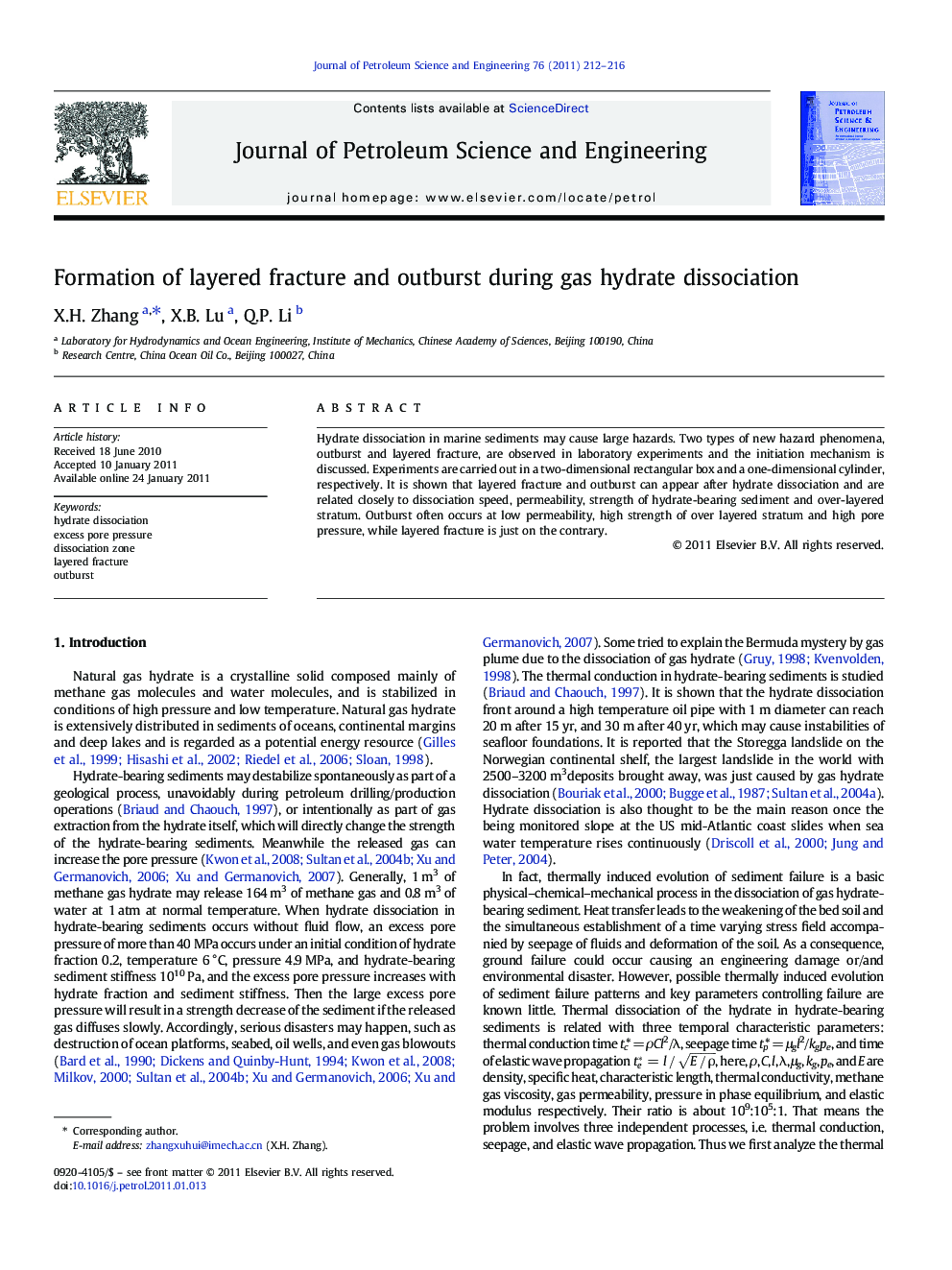| Article ID | Journal | Published Year | Pages | File Type |
|---|---|---|---|---|
| 1755891 | Journal of Petroleum Science and Engineering | 2011 | 5 Pages |
Hydrate dissociation in marine sediments may cause large hazards. Two types of new hazard phenomena, outburst and layered fracture, are observed in laboratory experiments and the initiation mechanism is discussed. Experiments are carried out in a two-dimensional rectangular box and a one-dimensional cylinder, respectively. It is shown that layered fracture and outburst can appear after hydrate dissociation and are related closely to dissociation speed, permeability, strength of hydrate-bearing sediment and over-layered stratum. Outburst often occurs at low permeability, high strength of over layered stratum and high pore pressure, while layered fracture is just on the contrary.
Research Highlights► Hydrate dissociation in marine sediments can cause large hazards. ► Outburst and layered fracture are observed in lab due to hydrate dissociation. ► The two hazards are related to dissociation speed and strength of stratum.
